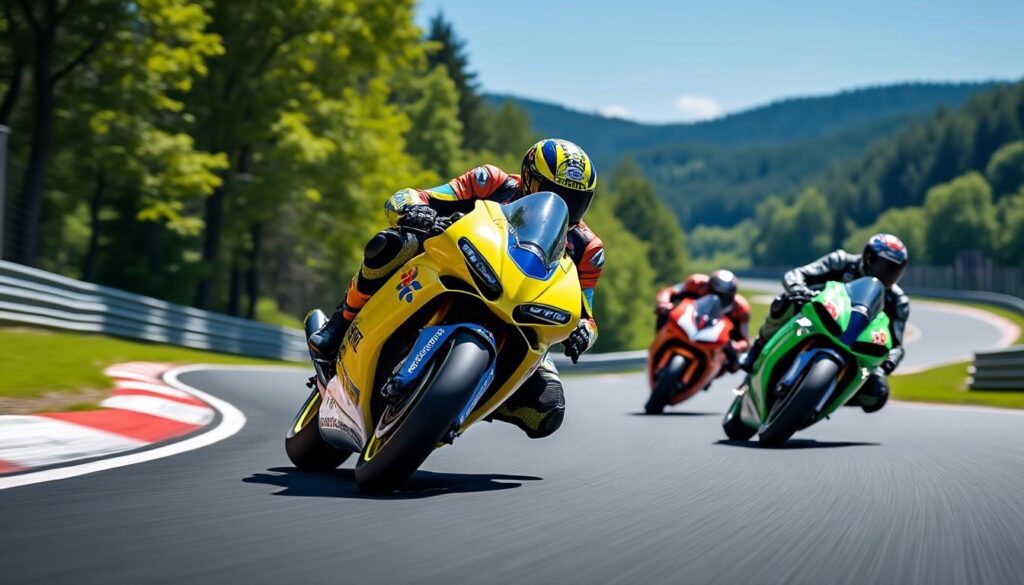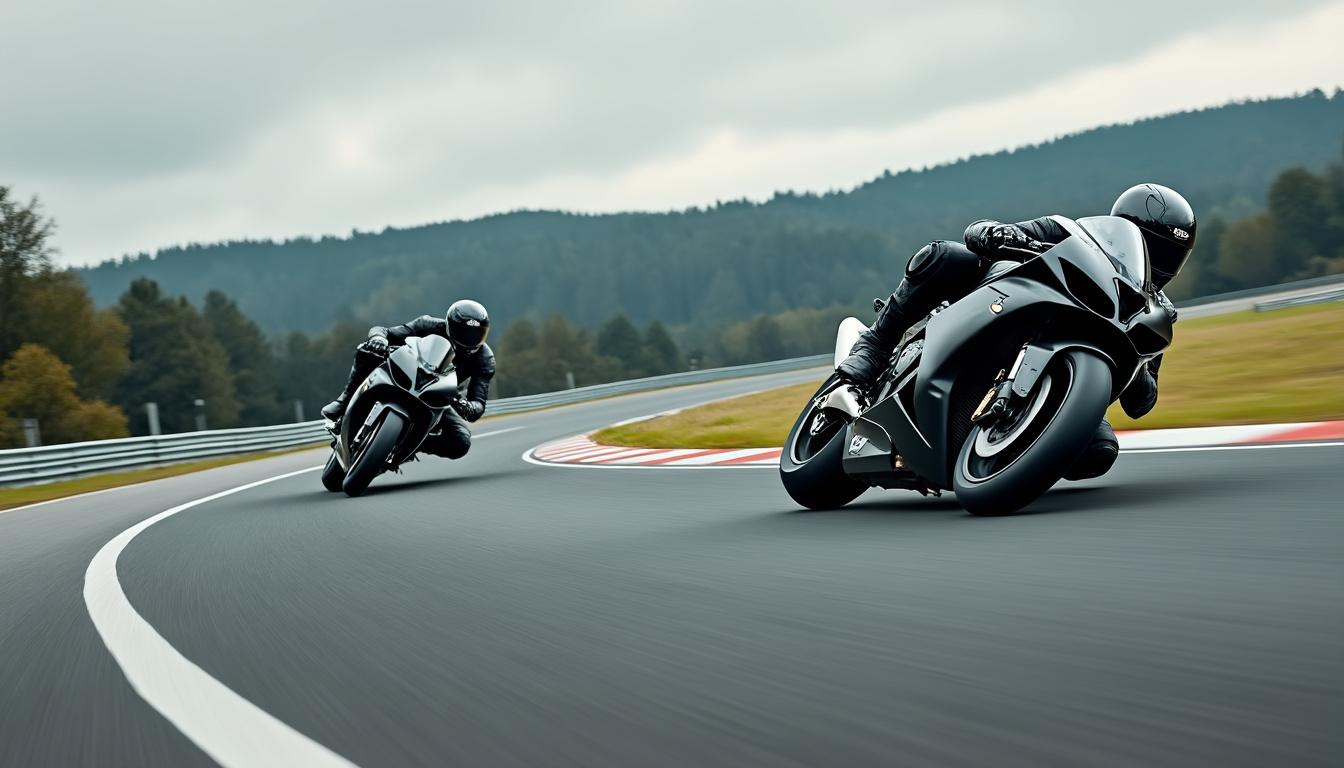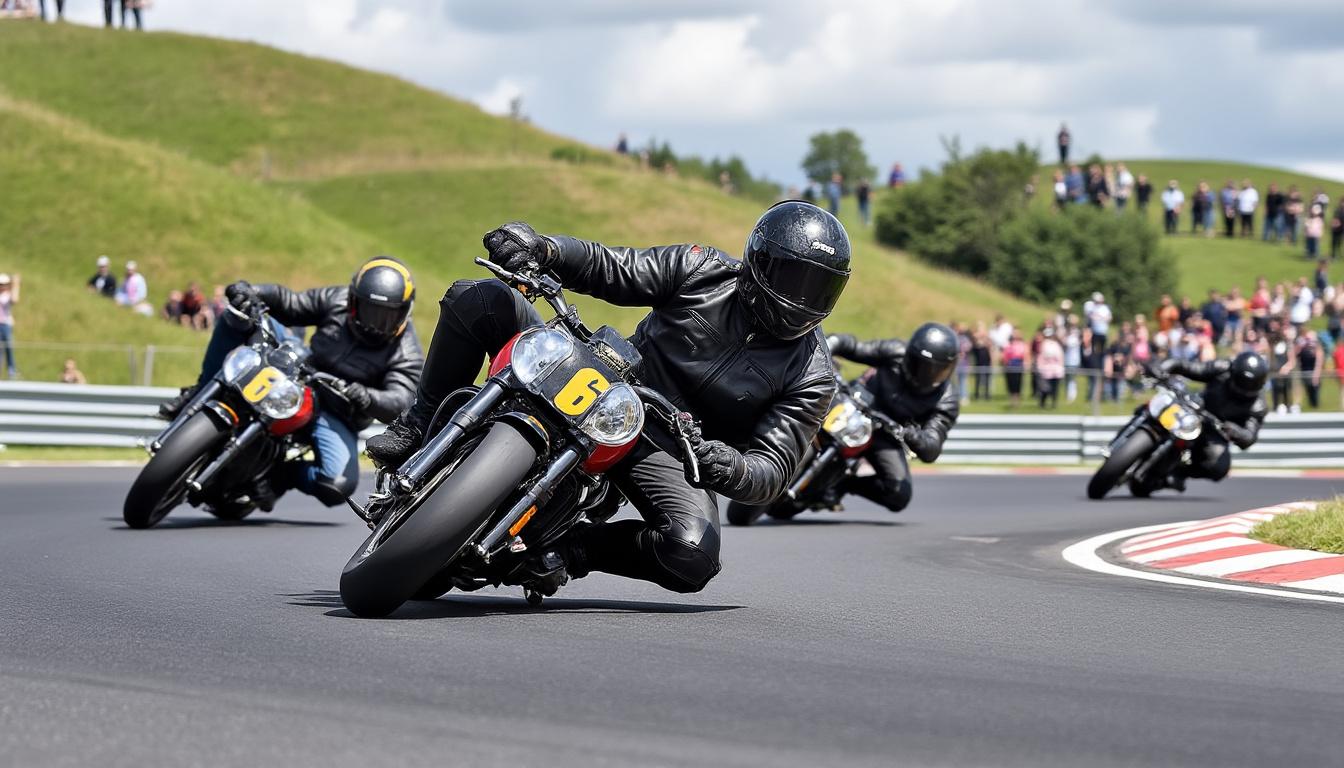Victory is on the agenda: the motorcycles return to the Nurburgring

For several decades, the Nürburgring, the iconic German circuit, has become a true pilgrimage for motorcycle enthusiasts. However, the recent ban on motorcycle traffic on the Nordschleife has raised waves of concern and anger among bikers. The decision was attributed to safety concerns, but the riders had not said their last word. Fueled by an unprecedented mobilization, the bikers decided to make their voices heard. Thus, after many discussions, the circuit decided to reverse its decision, allowing motorcycles to return to the legendary track for a total of 38 days of riding. Hope has thus returned for those who dream of treading the asphalt of the Nürburgring on machines such as the Kawasaki Ninja, the Yamaha YZF-R1, or the Ducati Panigale.
The reasons for the motorcycle ban on the Nürburgring
In 2025, the decision to ban motorcycles on the famous Nordschleife was motivated by growing safety concerns. Indeed, the circuit's management highlighted several arguments. First, the significant differences between the driving dynamics of motorcycles and those of cars would represent a major danger. Motorcycle riders lack escape areas in case of problems, which increases the risks of serious accidents. An accident on this legendary circuit can quickly turn into a tragedy, whether for the rider or for other road users.
Furthermore, the number of accidents recorded on the circuit in recent years also contributed to this decision. Due to the great diversity of vehicles present on the track, the coexistence between motorcycles and professional or tourist cars has proven to be delicate. Feedback from observing riders often indicated that motorcyclists struggled to anticipate the unpredictable behaviors of competing cars. With such a busy and complex environment, it was deemed safer to suspend motorcycle sessions.
Despite these justifications, the blow fell unexpectedly for enthusiasts. In the face of this decision, many felt deprived of their iconic passion. For some, the Nürburgring represents much more than just a circuit; it is a place of expression, a competition stage, a space where they can put their talents and motorcycles to the test. This decision was therefore perceived as an infringement on motorcycle culture, on the camaraderie of the sport, and on riders' freedoms.

The consequences of the ban
The decision to ban motorcycles quickly spread throughout the biking community, sparking outrage and controversy. In reaction, many enthusiasts decided to mobilize. Petitions emerged, signed by thousands of enraged bikers, demanding the return of motorcycles to the track. This mobilization demonstrated how much the Nürburgring and riding times mattered to this community. In this context, motorcycle brands like Kawasaki, Yamaha, or Ducati took a stand, emphasizing how crucial it was for them to test their models on this circuit.
On the ground, the effects of the ban were noticeable. Motorcycle clubs saw a significant drop in participants during events scheduled outside of the Nordschleife. The passion for riding on open roads seemed to fade. While some bikers sought other tracks to express their passion, many racing events found themselves deserted. Frustration and sadness marked these long months of waiting, with a heavy sense of loss weighing on all fans.
Additionally, the local economy also felt the impact of this ban. Small businesses around the circuit, which depend on the influx of visitors each year, saw their revenues drop. Hoteliers, restaurateurs, and other local tourism stakeholders had to face this delicate situation. The absence of bikers was felt during major gatherings, contributing to a gloomy and oppressive atmosphere.
The mobilization of bikers: a turning point
Faced with the ban on motorcycles, bikers did not accept the situation. Their determination led to a large-scale mobilization. Biker groups gathered to discuss possible actions to make their voices heard. They created online platforms, launched awareness campaigns on social media, and organized gatherings around the Nürburgring.
Members of enthusiast groups, like those from BMW Motorrad or Honda, joined forces to create a powerful movement. This was a true example of solidarity. In recent years, it has become increasingly evident that many motorcycle clubs go far beyond just a passion for speed. They emphasize the camaraderie and friendliness that exist in this world, creating a sense of belonging that has strengthened their determination.
A petition was launched, generating great support within the community. In just a few weeks, thousands of signatures were collected. Bikers were not only fighting for their right to ride, but also for the recognition of their passion. These efforts became true catalysts for obtaining responses from the circuit management.

The role of new technologies in mobilization
In the digital age, social media played a key role in this mobilization. Bikers adeptly used platforms like Instagram, Facebook, or Twitter to share their experiences, fears, and hopes regarding access to the Nürburgring. Videos of rides, images of enthusiasts at the top of the Nordschleife, all contributed to creating a genuine wave of solidarity.
This visibility allowed them to reach a wider audience, even attracting media attention. Articles, reports, and television shows covered the situation. Thus, the movement gained unexpected momentum. Thanks to this media virality, pressure on the circuit's management significantly increased. The slogans "Free riding for all" echoed in the ears of decision-makers, making the situation hard to ignore.
New communication technologies have proven that they can play a positive role in a movement for claims. Moreover, influencers and recognized riders from brands like Triumph or MV Agusta lent their support, contributing to giving more weight to the movement.
The triumphant return: 38 dedicated motorcycle riding days
Following the constant pressure from bikers, the management of the Nürburgring finally made a long-awaited announcement. Starting in 2025, the circuit will host 38 days specifically reserved for motorcycle riding. This is a true symbol of victory for all those who have fought to keep their passion alive. Bikers will once again tread the asphalt of the historic circuit, a place so dear to their hearts.
This return will come with significant safety measures. Each riding day will be organized into groups based on experience. Additionally, professional instructors will be present to supervise the sessions. This will reassure new riders and encourage a safer riding environment for every participant. Motorcycles will be able to operate without the fear of cars in their way, making each session more enjoyable.
| Authorized motorcycle brands | Popular models |
|---|---|
| Kawasaki | Ninja H2 |
| Yamaha | YZF-R1 |
| Ducati | Panigale V4 |
| Honda | CBR1000RR |
| BMW Motorrad | S1000RR |
| Suzuki | GSX-R1000 |
| KTM | Super Duke |
| Triumph | Speed Triple |
| MV Agusta | Brutale 1000 |
| Harley-Davidson | Fat Boy |
The return of motorcycles to the Nürburgring is not just a minor adjustment. It represents an important moment for the motorcycle world. This change reflects the resilience of a community ready to fight for their passion. Representatives from each brand, from Kawasaki to Harley-Davidson, hail this decision as a step towards a more harmonious future for all two-wheel enthusiasts.
Future prospects for bikers at the Nürburgring
The return of motorcycles to the Nürburgring opens new prospects for bikers. Once again, they will have the opportunity to experience the thrill and adrenaline of competition on this legendary track. Beyond the sporting aspect, this also represents a chance to rediscover the circuit, meet other enthusiasts, and share unforgettable moments.
In addition to these riding days, the Nürburgring may also consider organizing events specifically dedicated to motorcycles, such as races or open house days. This would create a positive dynamic for the circuit and strengthen the commitment of the biking community.
Motorcycle brands like KTM, Triumph, or MV Agusta could also seize this opportunity to showcase new models during these riding days. This would be an ideal way to attract new enthusiasts and ensure a flourishing future for motorcycle culture.
Ultimately, the return of motorcycles to the Nürburgring perfectly illustrates how a community can mobilize to defend its rights. The path is now paved towards a promising future, where two-wheels and enthusiasts can continue to write their story on the legendary Nordschleife.
Source: www.caradisiac.com
Leave a Reply



Articles relatifs